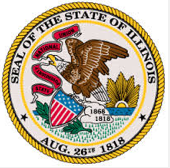Updated May 7, 2015 at 5:21 PM
“Talking about the historic nature of this site, and talking about the future of rail traffic that we also want to see, I think what we should do is proceed with a sense of coming together,” he said. “Everything can come together if we work together.
Further excavation is on hold as both state and federal authorities decide how to handle the site, which could be preserved as is or moved to another location. The dig itself will not affect the rail project since the site is far enough south of the underpass.
Kevin Seals, chief environmental scientist for Hanson Professional Services, the company overseeing the Carpenter Street work, said in testimony before the committee that it will be months before there is a final report on how to handle the excavation.
The city held a meeting March 10 to gather recommendations for the site, but the Rev. T. Ray McJunkins of the Faith Coalition for the Common Good said public input was limited.
“The last public meeting that took place, though it was a public meeting, the public had very limited say-so in that,” said McJunkins, who ran unsuccessfully for city council in last month’s election. “Ultimately, we signed cards, made comments and dropped the cards in boxes.
Incoming Mayor Jim Langfelder, who plans to attend Monday’s meeting, said the process going forward will be transparent.
“Not just this project, but with anything, we’re going to make sure that we’re being accessible to the public as much as possible,” he said.
Rep. Tim Butler, R-Springfield, said the process has been collaborative, but he hopes Langfelder taking office will alleviate some of the concerns.
“I do think it’s a new day in Springfield with Mayor Langfelder taking over,” Butler said. “There’s some willingness on all sides to make sure there’s transparency and information is given when requested.
The Carpenter Street site is believed to be one of the earliest settlements for Portuguese immigrants in the Midwest. By the early 1900s, the neighborhood of immigrants and black residents had become known as “The Badlands.”
The locale was the epicenter of an August 1908 riot over the transfer of two inmates at the Sangamon County Jail. A white woman accused a black man of sexual assault — a claim she later recanted.
Mobs wreaked havoc on the community for two days, burning black-owned businesses and houses — including the houses found on Carpenter Street — and killed at least seven people. Two black men, including an 80-year-old acquaintance of Abraham Lincoln, were lynched.
“Whether or not we’re proud in this point in our history, it is a part of our history,” Butler said. “To have these race riots take place in Abraham Lincoln’s hometown certainly impacted our nation and is a part of the fabric of this community that needs to be told.”
The riots in part led to the formation of the NAACP, the nation’s oldest civil rights group, in 1909.
Monday’s meeting will take place from 5 to 7 p.m. in Room B11D of the Prairie Capital Convention Center.
State Journal Register News story link: http://www.sj-r.com/article/20150507/NEWS/150509527/?Start=1
